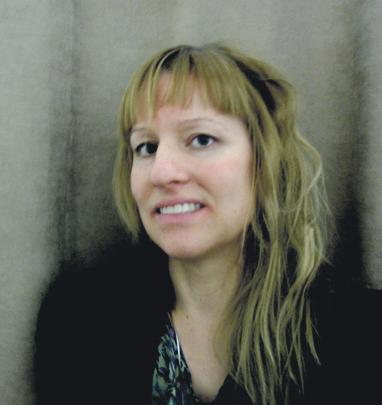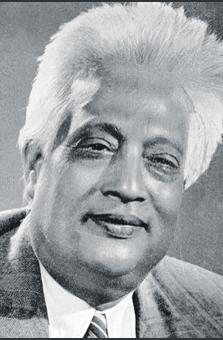
4 minute read
Higgs boson breakthrough
from 2012-08 Sydney (1)
by Indian Link
One of India’s leading scientists has been recognised in a ground-breaking discovery
significantly toward the recent discovery.
The answer to this question tells us that the ‘boson’ identity was not a direct contributor to the recent discovery, however was responsible for a number of significant advances in science and has consequently been recognised and remembered through the naming of the Higgs boson particle. The identity that the term ‘boson’ refers to is the Indian Physicist, Professor Satyendra Nath Bose (1894-1974).
Bose’s connection with Einstein came about in 1924 when he sent a physics paper he had written to Einstein for his opinion. Einstein had been awarded a Nobel Prize in 1921 and was the recipient of many letters and requests for his opinion on all topics relating to science, culture, art, even food! Regardless, Bose’s paper caught Einstein’s attention, and with the scientist’s approval, it was soon after published in the top German physics journal of the time.
which appeared to have mass, only did so because they were in the presence of other Higgs boson particles. It took until 2012 to prove these particles existed, and this was no mean feat.
BY LEANNE WOODWARD

There has been an enormous amount of worldwide media reporting the recent discovery of the so-called Godparticle, which we now know as the Higgs boson particle. When a physics story tops all headlines in the media, we can be sure that the discovery was exceedingly significant.
From reports, we know that we can attribute the discovery of the Higgs boson particle largely to physicist Peter Higgs, and also to the research team in Switzerland at the European Organisation for Nuclear Research. The discovery is so significant many are talking about a Nobel Prize for Peter Higgs. I heard much about Higgs in the media but I wondered about the other namesake of the Higgs boson particle, ‘boson’. This identity appears very less in the media, but I wondered, had this identity also contributed
Satyendra Nath Bose was born in Kolkata, and was one of seven children. He was an exceptional student, accomplishing top grades in BSc Mathematics and MSc Mixed Mathematics. In his professional career he specialised in the fields of quantum mechanics and mathematical physics. From 1917, Bose taught at the University of Calcutta where he worked in a poorly funded facility, but with an inspiring group of worldclass mathematicians such as CV Raman, and Meghnad Saha. In 1921, Bose left Calcutta University and took up a position as a lecturer at the University of Dhaka, and became the head of the physics department for 25 years. In 1945 he moved to the University of Calcutta, and continued his research and teaching until he retired in 1956. Throughout his career, Bose’s knowledge and understanding of quantum physics was such that he had the opportunity to collaborate and deliberate with physicists of equally high stature, including the renowned Louis de Broglie, Marie Curie and Albert Einstein. It was in particular Bose’s collaboration with Albert Einstein that helped generate some of Bose’s most significant work.
In 1925, Bose took 2 years study leave from Dhaka University and travelled to Paris. There he worked in Madame Curie’s laboratory on X-rays and radiation. The following year, Bose moved to Berlin to meet and work with Einstein. There, he was amongst the likes of Niels Bohr, Werner Heisenberg, Erwin Schrödinger, and many other extraordinary scientific scholars.
Satyendra Nath Bose’s work is of Nobel Prize stature, many believe, as the concepts he derived and defined are today considered physics fundamentals. The three most notable contributions by Bose include 1) Bose statistics, 2) the Bose-Einstein condensation phenomenon, and 3) Bosons, a class of subatomic particle he defined, which includes the particles Gravitons, Photons, Gluons and Higgs bosons.
The Higgs boson, ‘Godparticle’, was only just recently proven to exist, using the world’s largest particle accelerator, a Large Hadron Collider, this, even though Physicist Peter Higgs had postulated the idea way back in 1964. Higgs hypothesized that all subatomic particles were entities with no mass, except for his speculated Higgs boson particle. Higgs believed that any particle
Now having proven such a feat, it still does not mean that the story is complete. Where new discoveries are made, there are always areas that require further explanation. One such case involves the Neutrino particle, believed to be the constituent of dark matter, the thing that makes up most of our universe, (and proudly first detected in India, at the Kolar Gold fields in an underground lab). Neutrinos are supposed to be massless, if you follow the Higgs boson theory. However in some experiments, neutrinos seemingly do have some mass and science is thus yet to prove how this could be the case. Work is being done at the India based Neutrino Observatory (INO) near Madurai in Tamil Nadu to try and answer this question. The discovery of the Higgs boson is a good sign that the research at INO, into atmospheric neutrinos, is on the right track.
So the story continues, and it is great to know that science in India is playing its part, and is at the forefront of research. Indian scholars and research teams are contributing substantially on a worldwide stage, in many fields of science. It’s wonderful to see that an Indian scholar has been honoured in this most recent groundbreaking discovery in physics. Satyendra Nath Bose, a remarkable physicist, his story both fascinating and motivating, and should be told more often. I wait in anticipation for the next discovery, and wonder, will it come out of India?

SN Bose was not a direct contributor to the recent discovery; however he was responsible for a number of significant advances in science and has consequently been recognised and remembered through the naming of the Higgs boson particle
Bose’s work is of Nobel Prize stature, many believe, as the concepts he derived and defined are today considered physics fundamentals












